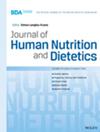Accuracy of reported energy in food and beverages supplied to hospital patients
Abstract
Background
Underprovision of food energy within the hospital environment can negatively affect clinical outcomes. Hence, the supply of hospital foods/beverages and the ability to assess their calorie provision is critical. The aim of this study was to directly measure the energy density of foods/beverages supplied to patients by Gold Coast University Hospital (GCUH) foodservice and compare these to caloric values established from nutrition information panels (NIPs) on product packaging.
Methods
Bomb calorimetry was used to determine the gross energy density of 58 food/beverage items (~47% of total menu) using standardised procedures. Food items included those from the general menu, in addition to therapeutic menu items. Equivalence between directly measured values and those derived from NIPs was determined by comparing the measured mean and ±90% confidence interval (CI) against two pre-defined equivalence bounds (i.e., ±10% NIP value [consensus criteria] and ±20% NIP value [United States Food and Drug Administration (US FDA) criteria]). Caloric values from NIPs were considered equivalent to measured values when the 90% CI of the measured values fell within these thresholds.
Results
Overall, 34 (59%) and 19 (33%) items had measured energy density values not equivalent to those from product NIPs according to the consensus and US FDA thresholds, respectively. When employing the US FDA criteria, 12 (21%) items contained a higher calorie density than that established from the label, while seven (12%) items were lower. While non-equivalent items were identified across all therapeutic menus, food labels from items exclusively prepared for the smooth-pureed menu were particularly inaccurate (~60% non-equivalency).
Conclusion
This study found a discrepancy between energy density that was directly measured and that derived from manufacturers' NIPs for many foods and beverages supplied via a hospital foodservice. Given the importance of accurate energy provision for hospitalised patients, this level of inaccuracy is concerning and may warrant a revision of food labelling procedures for items supplied in hospital settings.

 求助内容:
求助内容: 应助结果提醒方式:
应助结果提醒方式:


